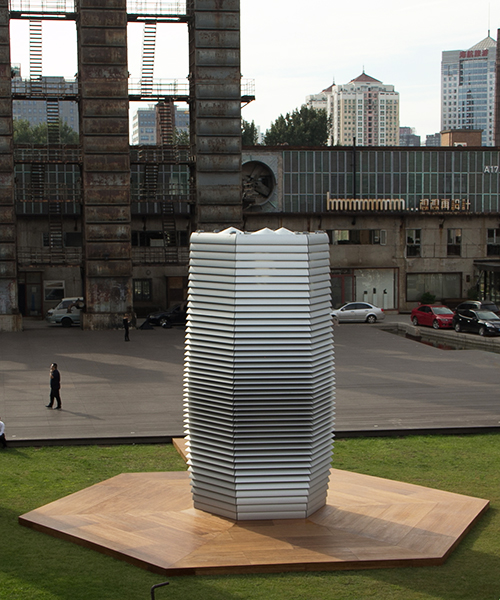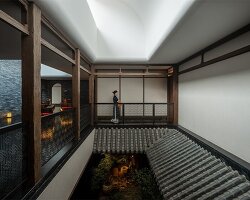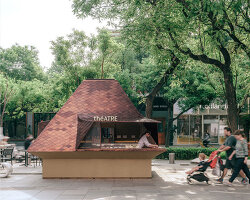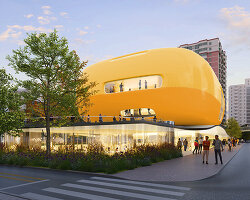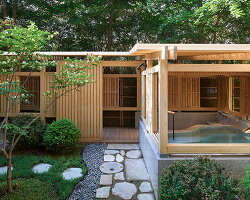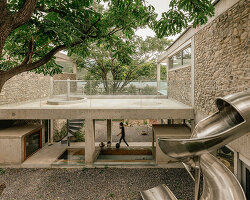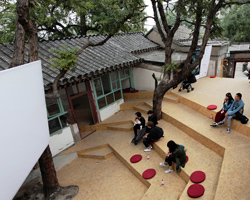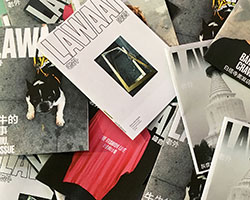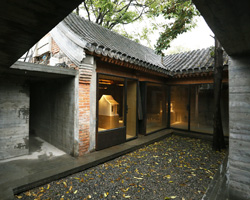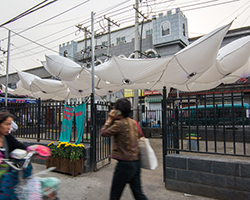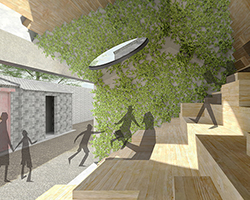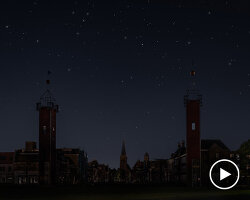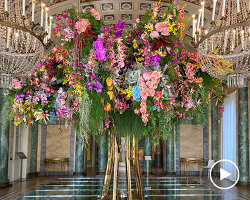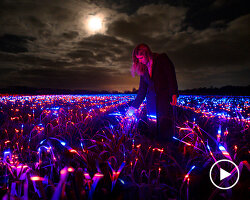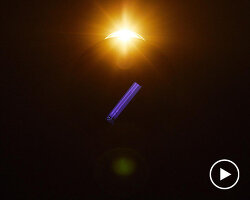daan roosegaarde’s ‘smog free’ project makes its china premiere during beijing design week 2016, following its debut in rotterdam last year. alongside a team of designers and experts, the dutch artist and innovator has envisioned the 7-meter-high structure as the largest air purifier in the world, creating a circular zone of clean air for citizens to experience and enjoy. cleaning 30,000 cubic meters per hour using ozone-free ion technology and a small amount of green electricity, the ‘smog free’ tower captures and collects more than 75% of the pm2.5 and pm10 airborne smog particles, releasing a 360 degree range of clean air around the structure. a line of ‘smog free’ jewelry serves as a tangible souvenir of the project: a ring and cufflinks are made from compressed smog particles collected by the tower.
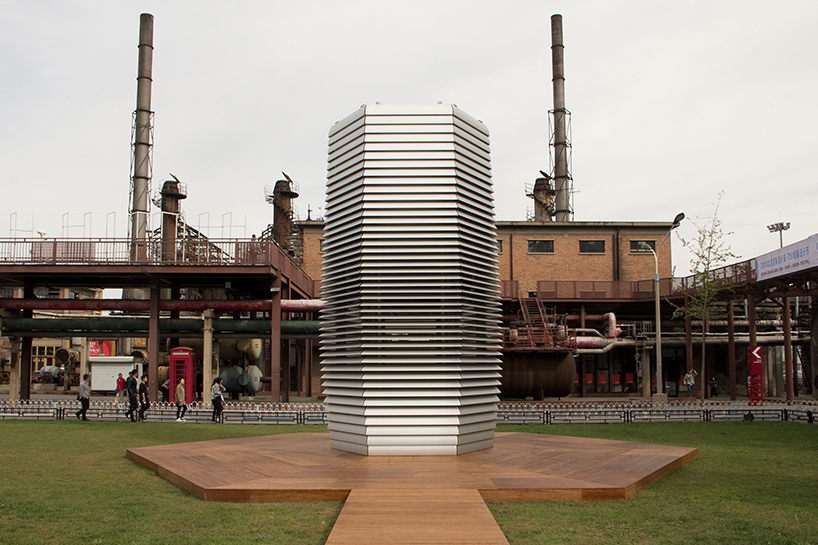
image by derrick wang
exhibited at 751 D-park in beijing, the official presentation marks the first stop of the ‘smog free’ project’s china tour, which will continue to four major cities in the coming year. coinciding with the presentation during beijing design week, we spoke with daan roosegaarde about how the project has developed since its inception, the public’s reaction to the tower, and his plans to extend the initiative to cities across the globe.
designboom (DB): how has the ‘smog free’ project evolved since we last spoke to you about it in rotterdam?
daan roosegaarde (DR): well, three years ago, standing looking from my room in beijing, seeing how the city was transformed by pollution, beijing was in a way always the place where the idea originated from, so the goal was always to go to china. and it’s great that after two or three years of designing, of engineering, of communicating, we’re launching it in the place where maybe it’s needed the most. so that’s I think one. two I think is that also we have the support of the china central government, so this is just the beginning, its not just an artwork or an idea about a white dutch guy. its really the beginning of the war on smog.
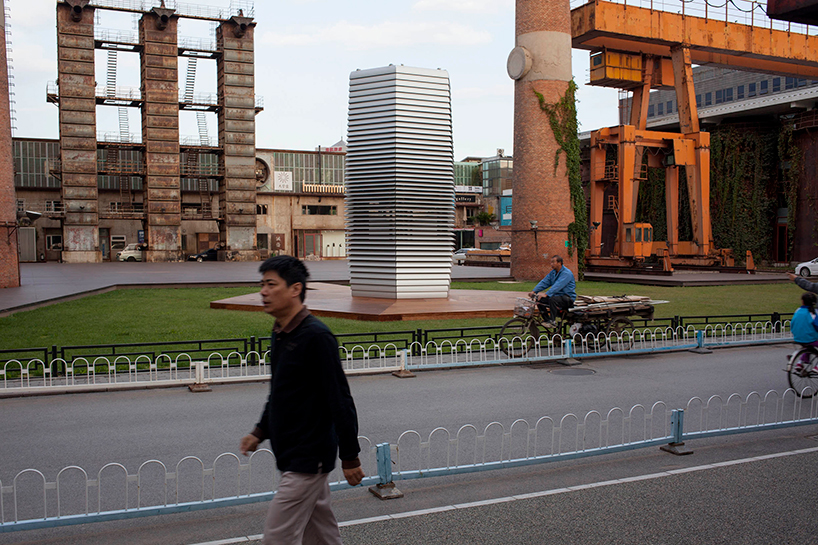
image by derrick wang
(continued) we’re going to make bigger towers, we’re going to do a tour through different cities in china, also we’re holding a symposium at M WOODS, its a great museum, where we have invited young designers, artists, engineers, from all around the world, that have their own smog solution, because that’s what happened after rotterdam. I have literally hundreds of calls, emails of people with their own ideas against smog! so we have a guy designing bicycles which suck up polluted air, clean it, and then release the clean air, so you can cycle clean air. we have people who made garments, which change in color when the smog level is too high. so it’s great to have generated a movement in a way, and to be a part of that. and I think that’s really important. so, it’s exciting this week, yeah!
DB: what do you think the impact and reaction will be in comparison to when you first unveiled it in rotterdam?
DR: I think for one, the ‘smog free’ project is a local, real solution for parks…creating parks and playgrounds which are 75% more clean than the rest of the city. I mean it’s been quite bad here [beijing] in the last couple of days. I’ve been around the tower and you can really smell the difference, your nose really feels the difference between the dirty air outside the circle and indoors, so that’s one: it’s the dream of clean air for everyone which has become true. second, is that it’s an inspiration to work with NGOs, the government, artists, pro-bicycle campaigns, saying — ‘okay guys, this is great, we have a first park, but what do we need to make a whole city smog free?’ — and that’s where creative thinking and technology and this kind of symposia that we’re doing, this kind of conference, is really important. so it’s two ways. and of course we’re going to make a whole series of smog free jewelry — the compressed, smog free diamonds, you’ve seen them?
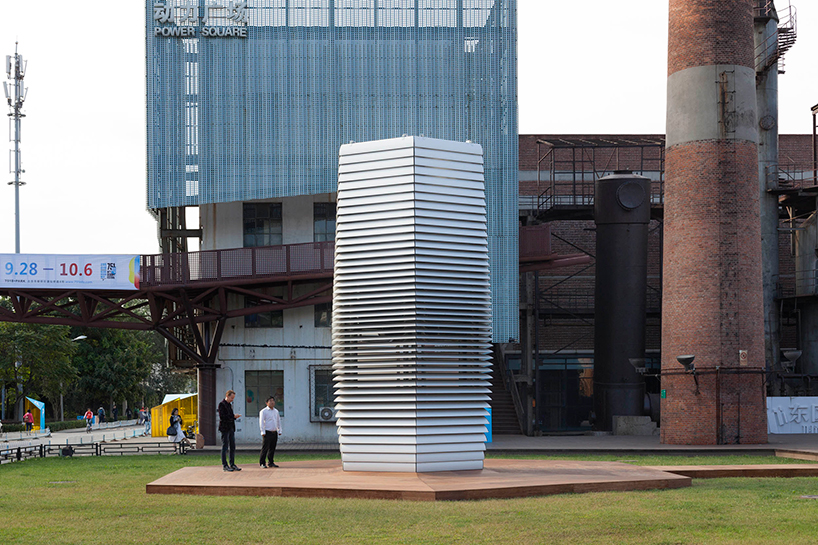
image by derrick wang
DB: yeah, I’ve seen some pictures of them — those look great!
DR: yeah, we have hundreds of chinese wedding couples wanting to purchase a smog free ring as a sort of sign of true love, of true beauty. but don’t forget, in china clean air is almost a sign of true beauty, of true love. so that’s great, to really get this emotional connection with the design, with the project.
DB: so it must be a very exciting time to be actually presenting your idea in the city that it was inspired by?
DR: man, after the first day I will be able to sleep. minimum 30 minutes longer every night. it’s been a ride, yeah! in the beginning, there will always be people saying — ‘oh it’s not possible, or it’s not allowed’ — and you know what people are saying this week to me? — ‘that’s a good idea, why didn’t you do it before?‘ — and that’s good, that’s part of the package that’s part of the change. and I think it’s part, this project, of the attractive landscape series that we’ve done until now, making floors which generate electricity when you dance on them, making bicycle pumps which you charge at day time and glow at night. so in that way it’s sort of a logical next chapter in our smart landscape, in our smart city project.
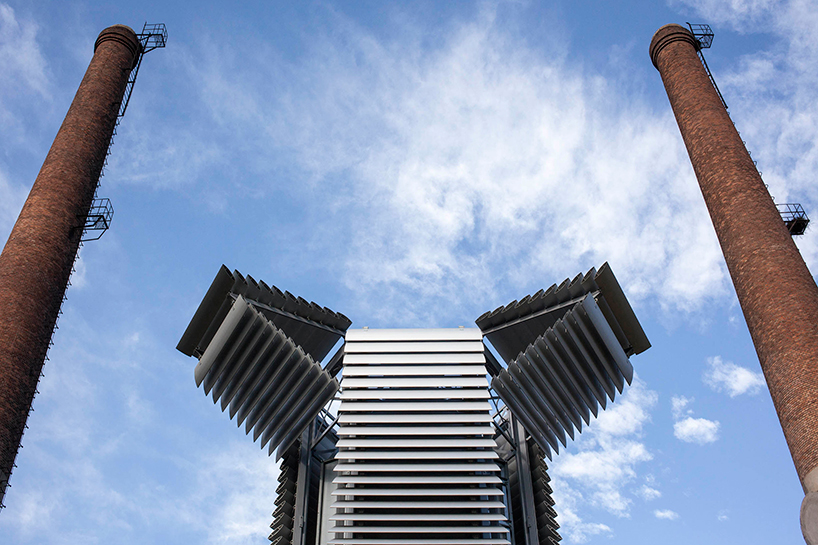
image by derrick wang
DB: you mentioned how it was quite a relief to get the project actually presented in beijing. what would you say has been the hardest part of realizing this project?
DR: I think what you want is to create true impact. that on one hand it’s a local solution for a park, but in the end it’s about the dream of clean air for everyone, and how do we achieve that, you know? yes, this is government with regulations for clean technology, but it’s also, how can I use design to engage people by becoming part of the solution instead of being part of the problem? and that takes time. so of course there are technical challenges, it was difficult to get through customs. this was really a project that I spent my own time, money and energy on, to launch. the hardest thing really is that it doesn’t become a gadget, but that it really becomes a change-maker. we will need to keep on pushing for the coming three to fives in order to make that happen. we are definitely not there yet, this is just the beginning of a new chapter.
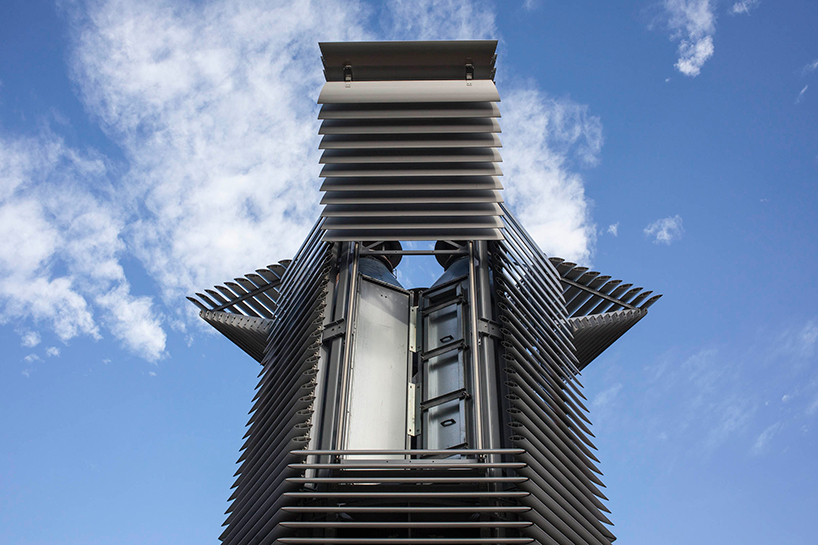
image by derrick wang
DB: does it feel really good to progress this project from the small kickstarter campaign, how it was first launched, to now the chinese premiere?
DR: yeah, I can honestly say I’m proud of it. at the same time, proud in such a way that it has caused two new ideas, not proud as I sit back and I relax. so, it’s an activator. you know design for me is not just about making another bloody chair, lamp, or table, but to improve life and it’s great to be a part of that. so it’s sort of end of chapter one and beginning of chapter two. we would love to keep you updated about how much smog we’ve collected.
DB: please do!
DR: the other smog solutions I just mentioned, we will be designing. because, is one smog free tower the solution for a whole city? no, of course not, but its I think the little rock in the river which creates the ripple which creates the change. and it’s great to be a part of that.
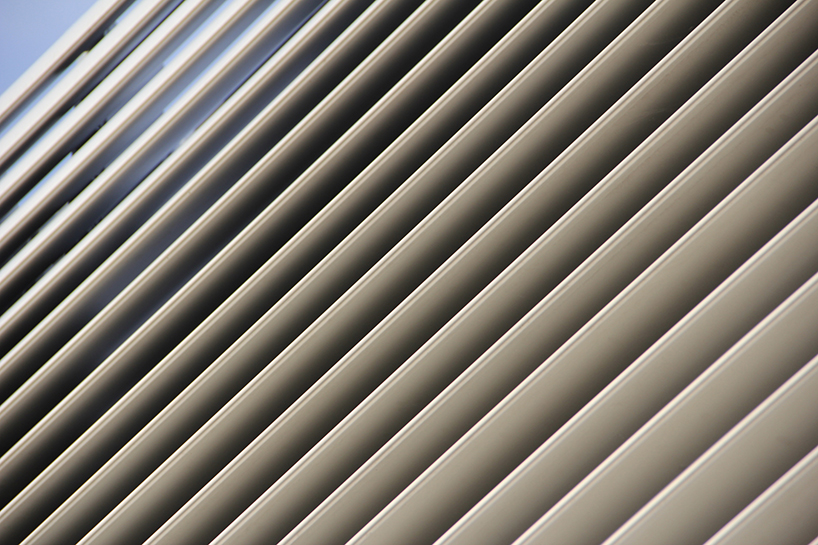
image by derrick wang
DB: can you talk about which cities are also part of this chinese tour, and why these sites have been chosen?
DR: we’re getting a lot of requests. we have our own ideas so we’re going to formulate that over the coming two or three weeks. heibei province is heavily polluted — that will be on out list for sure; shenzen, because of its great makers mentality; shanghai, because its a city which needs it as well. this week there is also a delegation coming from india and mexico city to witness the tower and the result. so its going to tour. but then again it will always be sort of connected with pro-bicycle campaigns, young makers, and conferences. and to make sure that people don’t think it’s just about a tower. it’s about a creative way of thinking. and what is the price of clean air? what is the value of clean air? you tell me. I think it’s priceless. being in beijing again, being here this week and inhaling the polluted air, we really need to get to work to improve that much.
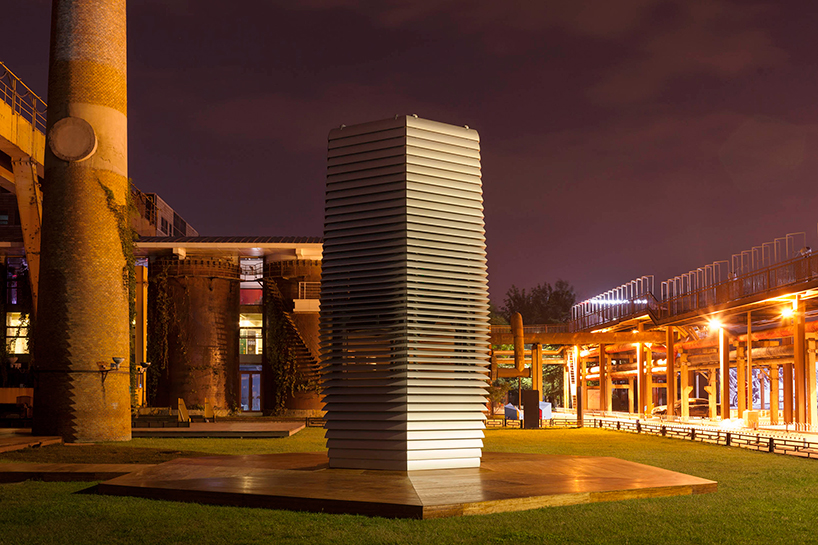
image by lard buurman
DB: how do you think the locals will react to the project — do you think they’ll appreciate it?
DR: it already happens, I’m being called the dutch smog-buster.
DB: that’s a great name.
DR: I mean, in the beginning they were a bit hesitant, like is he making fun of us? we seem a bit ashamed of the pollution, we don’t like to be remembered by it. then they saw we were being serious, and we also worked together with tsinghua university — the sort of the MIT of china — in beijing. you know, it’s not about being right, it’s about working together to improve. and now there’s a lot of love, and you can feel that, and it’s great. so, let’s see where it takes us! I feel like a hippy with a business plan. you know, you can have a dream, an idea, but at the same time you want to make it happen. you want to build it, and you have to be this sort of infiltrator, a happy infiltrator, you check out a system, you question it, and come up with new proposals. the only disadvantage is that I would sometime smoke a small cigarette, because there was so much work last week. that’s the only disadvantage.
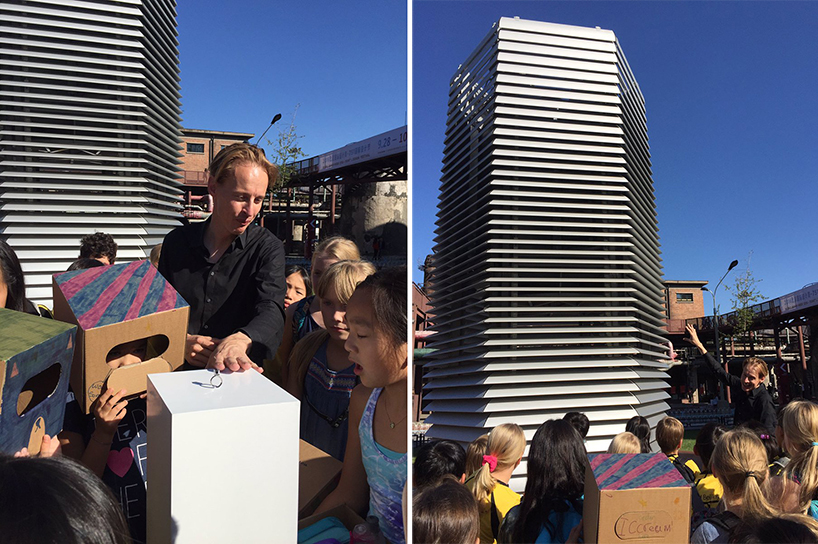
images courtesy of studio roosegaarde
DB: do you see after this chinese tour, do you think the smog free tower could be positioned anywhere else in the world?
DR; yeah, I think india, we’re getting a lot of response from that, mexico, but also a lot of them to be honest. I’m going to be going back to london in three weeks, and even my own city of rotterdam. every big city has a problem with this pollution. so beijing is sort of the first laboratory for the heavyily smog polluted areas, but let’s hope we will learn things that we can grow. and let’s hope that we are working together with new designers, new technology, to in ten to fifteen years to create cities are not necessary anymore. that my grandchildren will ask, hey, grandpa, what did you do? and I’ll say I made these smog free towers and they suck up pollution, and then they ask me, pollution? what is pollution?
DB: that’d be great. so that’s kind of the future of this project, you kind of see these towers popping up in different cities all around the world?
DR: yes, but also variation of it, like the smog free bicycle. we’re also working with some architects on a larger infrastructure, to use the sewer pipes in the city to suck up polluted air and clean it. very interesting. so that would really create a large impact on a city scale. and if you put the sewer pipes under a little bit of pressure and you replace them [the lids] with a filter. we’re doing some first prototypes in that.
video courtesy of studio roosegaarde
DB: yeah that would be good to see. and so you mentioned the smog free bike, is that being presented at the conference in beijng?
DR: yeah, so there’s a beijing designer matt hope, he made one. there’s a branch of design firm ‘frog’ who also worked on a prototype. I had the idea as well. and then I started googling and I found them. but we invited them, they’re coming, and they’re sharing their own ambition for a clean future.
DB: so it’s encouraging these smaller applications?
DR: yeah, because we have a good connection with the mayors and the industry. sometimes these beginning artists are really focused on the idea so I think it’s also a way of connecting different worlds together. the dream of clean air, that’s what the project is all about.
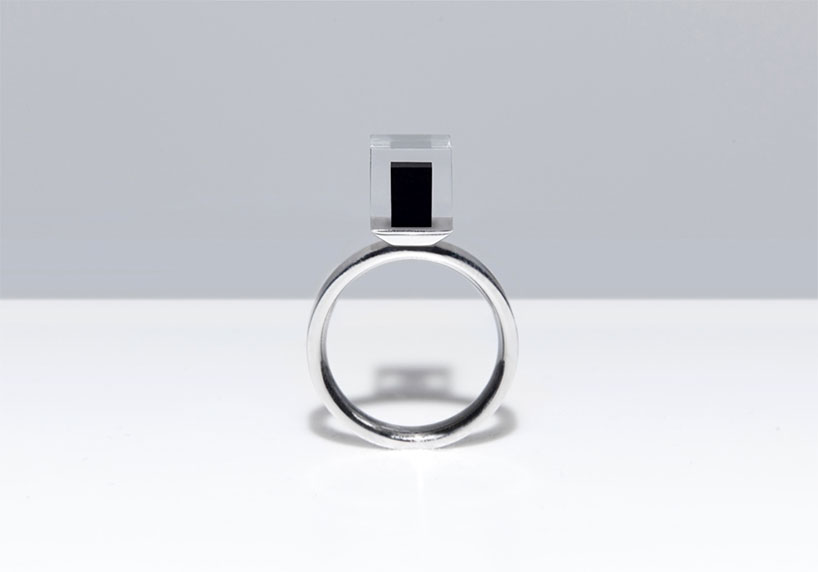
update: on october 26th, roosegaarde released a new edition of the ‘smog free’ ring made from particles collected from the beijing tower. each ring is individually crafted by roosegaarde’s team in the netherlands and unique in the world.
Save
Save
happening this week! holcim, global leader in innovative and sustainable building solutions, enables greener cities, smarter infrastructure and improving living standards around the world.
architecture in beijing (202)
BJDW beijing design week 2016 (8)
studio roosegaarde (34)
PRODUCT LIBRARY
a diverse digital database that acts as a valuable guide in gaining insight and information about a product directly from the manufacturer, and serves as a rich reference point in developing a project or scheme.
